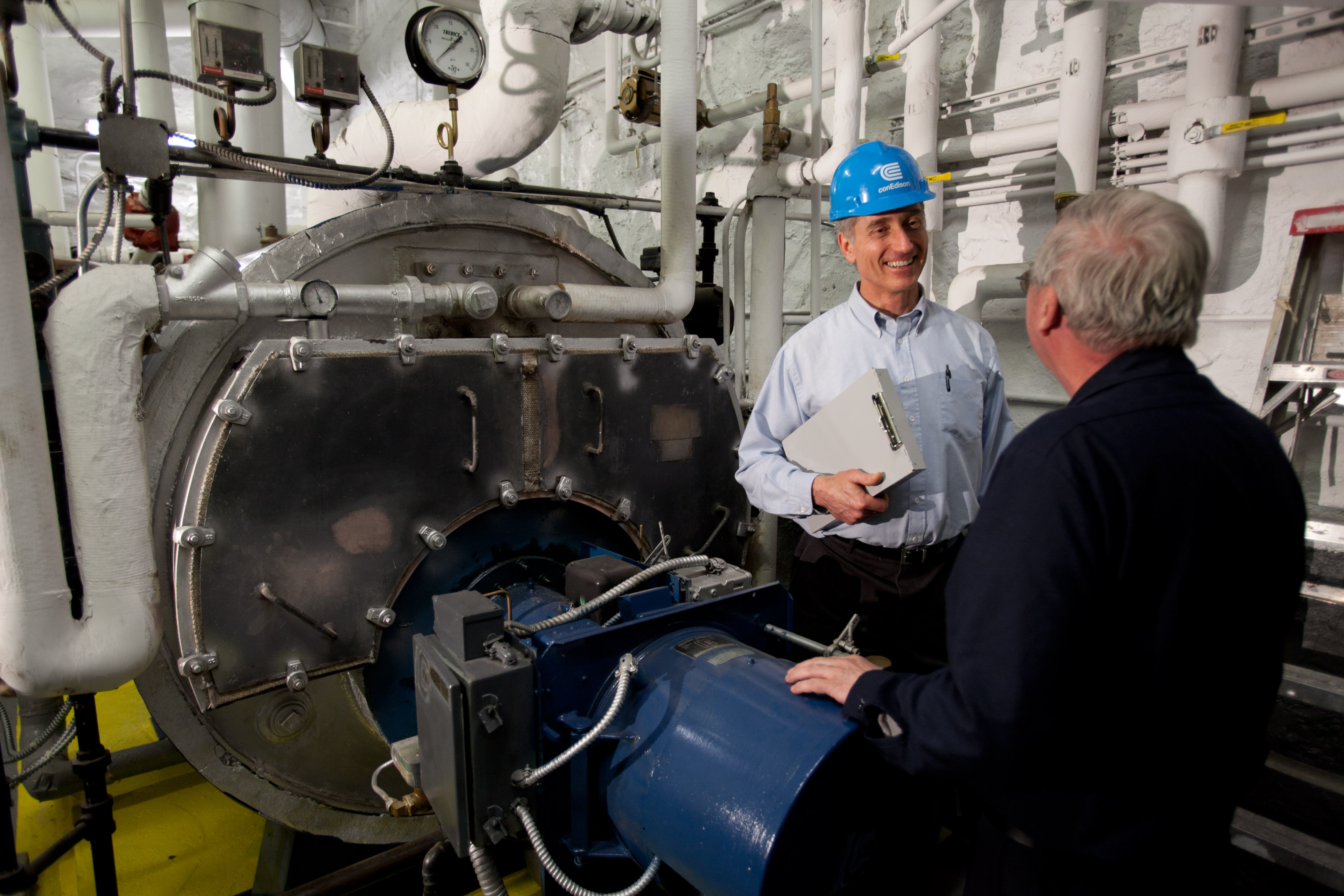October 2013, Vol. 240 No. 10
Features
Con Edisons Clustering Cleans Air Over Gotham

New York City’s skyline is ever-changing and is now undergoing a change of another kind – a cleaning of the air around it, assisted by a Con Edison program, which helps people switch to cleaner-burning natural gas.
A city regulation, initiated by the Bloomberg administration, phases out the burning of No. 6 and No. 4 fuel oils by 2015 and 2030, respectively. For Con Edison’s gas business, that’s an opportunity to increase business while improving the environment, the perfect marriage between economics and green responsibility.
Nearly 9,000 New York City buildings were burning No. 4 or No. 6 fuel oil in April 2011. These heavy oils, used to heat office and apartment buildings, contain particulate matter, sulfur dioxide, nitrous oxide and CO2. Several of these emissions have a direct link to asthma and hospitalization rates. The Environmental Defense Fund estimates that $733 million in annual health care savings will be realized when these fuel oils are no longer burned.
Con Edison’s gas distribution system supplies an average of 225 Bcf per year to 1.1 million customers in four operating areas, including the Bronx, Manhattan, Queens and Westchester through more than 4,300 miles of gas mains. The majority of the customers cook with gas, but there are about 6,300 heavy oil burning customers in the city that could be switched to natural gas for their heating needs.
Streamlining The Conversion
Managing such a conversion is a challenge. The company created a group dedicated to streamlining the process, bringing marketing, engineering and operational support together, to focus on these potential heating customers.
Initially, Con Edison hoped to encourage groups of customers to convert at the same time, a concept it called “clustering.” Simply, the goal was to get adjacent customers to commit to converting at the same time, reducing main reinforcement costs incurred by any single customer and constructing once, minimizing disruptions to the neighborhood.
The first pilot “clustering” project was in the Morningside Heights area of Manhattan. Approached by Columbia University, which was interested in converting 81 of its buildings, Con Edison designed a phasing plan for the area, using the university as an anchor.
Buildings in the surrounding community were approached and offered a low- to no-cost upgrade cost from the company if they also converted to natural gas. The engineering section of the dedicated conversion group created a complex web of main extensions to improve the ability of the neighborhood to connect to the gas infrastructure.
Con Edison then expanded the clustering concept beyond Morningside Heights and began marketing to customers along the same main. Clustering has the advantage of reducing the cost customers pay for service beyond their tariff entitlement, and can potentially bring that to zero.
This year brings “Clustering 2.0” to the market in the form of the company’s area growth plan. Con Edison marketed to 12 zones in Manhattan and the Bronx – giving customers in those areas the best possible opportunity for a zero-cost solution –then engineering a complex series of main extensions in those areas.
“Area growth reduces potential costs for customers, allows us to construct once and take advantage of our infrastructure in a systematic way,” said Nick Inga, director of the Gas Conversion Department. “We believe this is the most effective way to convert large numbers of customers at once.”





Comments